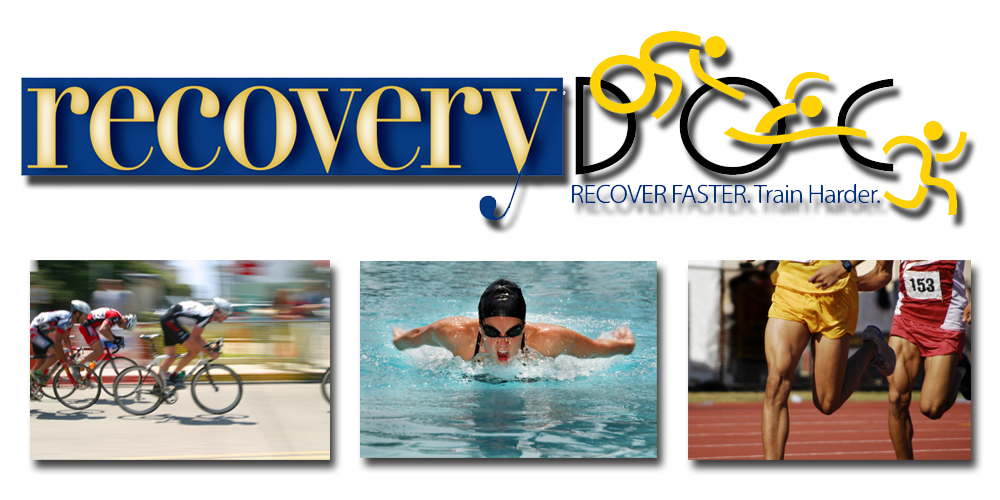
Putting on the Stripes to Ease Pain .
Text By LAURA JOHANNES
Bright-colored strips of tape in odd patterns are increasingly being seen on professional and recreational athletes. Kinesiology tape can help take pressure off overused muscles, reduce swelling and alleviate pain from injuries, say companies that sell it. Scientific evidence is mixed, but clinicians say it seems to work—at least in the short term.
Kinesiology taping, developed in the 1970s by Japanese chiropractor Kenzo Kase, came to the U.S. in the mid-1990s. Now, a number of companies are competing with the tape created by Dr. Kase, called Kinesio Tex Tape. While the tape is sold by Kinesio Holding Co. only to clinicians, such as physical therapists and chiropractors, some of the newer brands are being marketed to consumers, with application instructions included on the package and on Web videos. (Kinesio Holding is an Albuquerque, N.M., company owned by Dr. Kase's daughter, Tomoko Kase.)
U.S. volleyball player Kerri Walsh wore Kinesio Tex Tape at the 2008 Beijing Olympics. Ms. Walsh is now a paid endorser for competitor KT Tape.
.Unlike standard athletic taping, which often involves wrapping a joint for support and compression, kinesiology tape is placed in a variety of patterns depending on the injury, says Graceann Forrester, a Cortland, N.Y., physical therapist who instructs clinicians on how to use the tape. It is pulled to differing degrees of tension to create the desired effect and is typically worn for two to five days, unlike standard tape, which is used mainly during an activity.
Kinesiology tape can be used to pull back a shoulder that is hunching forward, Ms. Forrester says. Or to reduce swelling in a joint, tape can be used to pull up the skin and create an area of low pressure where fluid can move and drain, she says. Some clinicians believe the tape provides stimulation to skin cells that affects pain pathways—similar to rubbing a spot that hurts.
Tape can be applied along the length of a tired muscle for support. "It allows the muscles to go on vacation for a day or two so they come back healed," says Gainesville, Va., physical therapist Holly Moriarty, a member of the Lumos medical advisory board who was offered stock options, but hasn't decided to accept them.
Kinesthesiology is growing as a non-drug means to treat muscle inflammation using strips of colored tape. D.C.-based sports chiropractor Holly Moriarty demonstrates how to tape a patient.
.Lumos, a Provo, Utah, company that began selling its KT Tape last year in major sporting-goods stores, offers a perforated and precut version to make it easier to use. Other new market entrants include Toronto's Nucap Medical Inc., which sells its SpiderTech brand to clinicians in a variety of pre-cut patterns, and RockTape Inc., of Los Gatos, Calif., which is marketing its tape to consumers as an enhancer of athletic performance.
RockTape so far hasn't published any evidence of its performance-enhancing claim, and clinicians are skeptical. Other companies' claims of reduction of pain and swelling are backed up by athlete experiences but the scientific literature remains inconclusive.
"There's no evidence of a long-term or medium-term clinically significant effect," says George Theodore, Massachusetts General Hospital surgeon and team physician for the Boston Red Sox, However, he says, kinesiology taping "is not harmful and over the short term it can have a beneficial effect" on pain and range of motion. It isn't clear if the effect is psychological, he adds.
Some trainers swear by it.Clay Sniteman, physical therapist and trainer for Association of Tennis Professionals, says he uses KT Tape during breaks in matches. "The athlete feels better immediately," says Mr. Sniteman, who says he gets no compensation from Lumos. "When that happens multiple times, there is something to it."
Two recent studies on Kinesio Tex showed some short-term effect. A study of 42 patients with shoulder pain, published in 2008 in the Journal of Orthopaedic & Sports Physical Therapy, found that range of motion improved immediately after application of kinesiology tape, compared with a sham taping using no tension. But the study found no significant difference in pain or overall disability scores.
Last year, a study on 41 patients with whiplash after car accidents found statistically significant pain relief and improvements in range of motion with kinesiology taping compared with a sham tape. The effects were seen immediately and continued a day later. In the paper, published last year in the same journal, the Spanish-led research team said the changes were so small they "may not be clinically meaningful." Kinesio Holding, which didn't fund either study, says a limitation of the shoulder study is that the kinesiology taping wasn't customized to each patient's injury.
Even if taping does work in the hands of a trained clinician, it isn't clear it will work when used by consumers. Taping can sometimes cause skin rashes, which can be minimized by not overstretching the ends, clinicians say. Baby oil can be used to remove any sticky residue.
See the full article here http://online.wsj.com/article/SB10001424052748703465204575208193178227952.html















.JPG)




